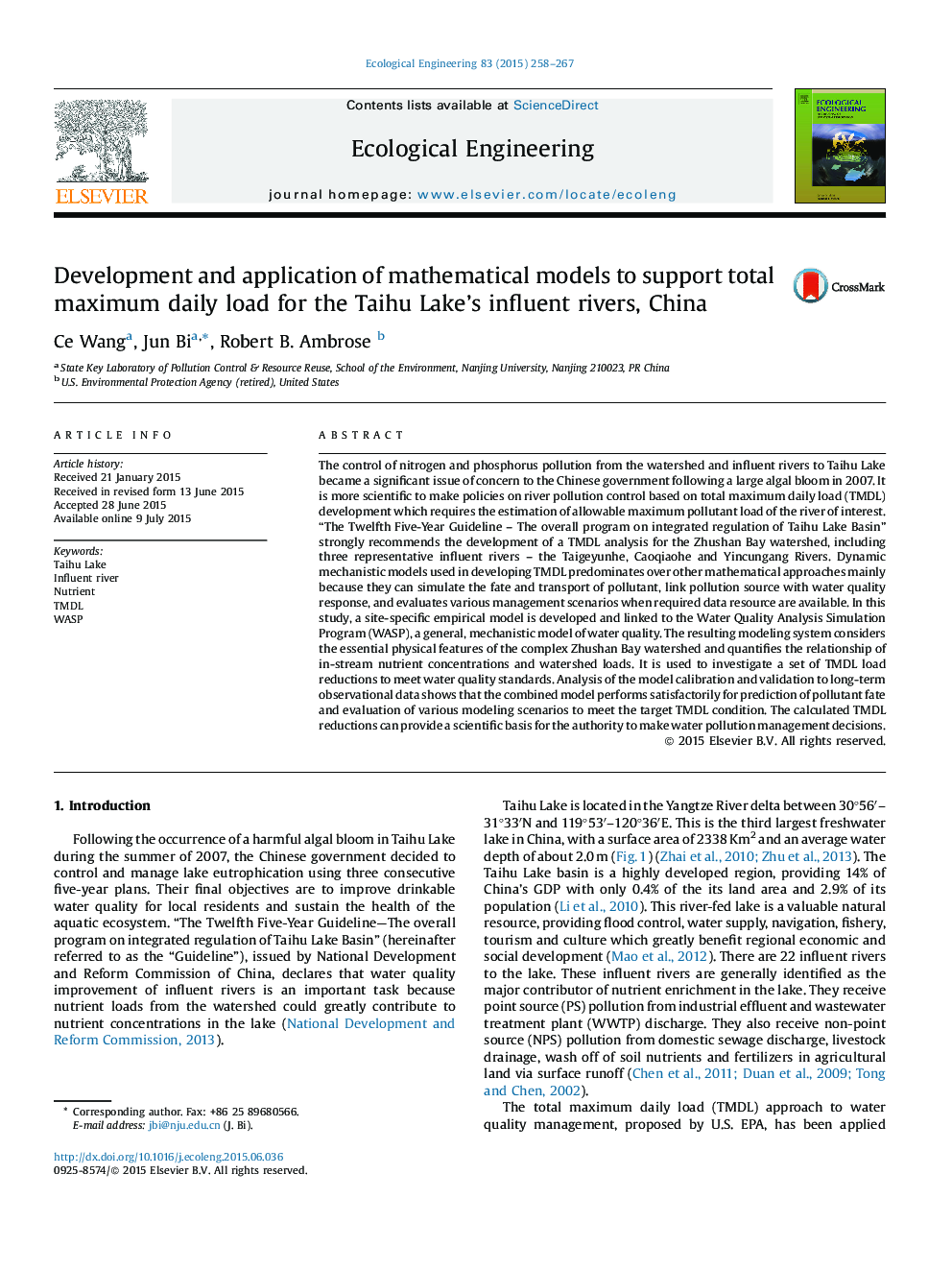| Article ID | Journal | Published Year | Pages | File Type |
|---|---|---|---|---|
| 4388874 | Ecological Engineering | 2015 | 10 Pages |
•The first nutrient TMDL for Taihu Lake Basin in China is established.•A combined mathematic models are developed to support site-specific nutrient TMDL.•The models perform agreeably with long-term observational data during 2007-2011.•Nutrient TMDL allows for the impacts of nutrient cumulative load over a long time.•The preferable TMDL scenario provides scientific insights for pollution abatement.
The control of nitrogen and phosphorus pollution from the watershed and influent rivers to Taihu Lake became a significant issue of concern to the Chinese government following a large algal bloom in 2007. It is more scientific to make policies on river pollution control based on total maximum daily load (TMDL) development which requires the estimation of allowable maximum pollutant load of the river of interest. “The Twelfth Five-Year Guideline – The overall program on integrated regulation of Taihu Lake Basin” strongly recommends the development of a TMDL analysis for the Zhushan Bay watershed, including three representative influent rivers – the Taigeyunhe, Caoqiaohe and Yincungang Rivers. Dynamic mechanistic models used in developing TMDL predominates over other mathematical approaches mainly because they can simulate the fate and transport of pollutant, link pollution source with water quality response, and evaluates various management scenarios when required data resource are available. In this study, a site-specific empirical model is developed and linked to the Water Quality Analysis Simulation Program (WASP), a general, mechanistic model of water quality. The resulting modeling system considers the essential physical features of the complex Zhushan Bay watershed and quantifies the relationship of in-stream nutrient concentrations and watershed loads. It is used to investigate a set of TMDL load reductions to meet water quality standards. Analysis of the model calibration and validation to long-term observational data shows that the combined model performs satisfactorily for prediction of pollutant fate and evaluation of various modeling scenarios to meet the target TMDL condition. The calculated TMDL reductions can provide a scientific basis for the authority to make water pollution management decisions.
